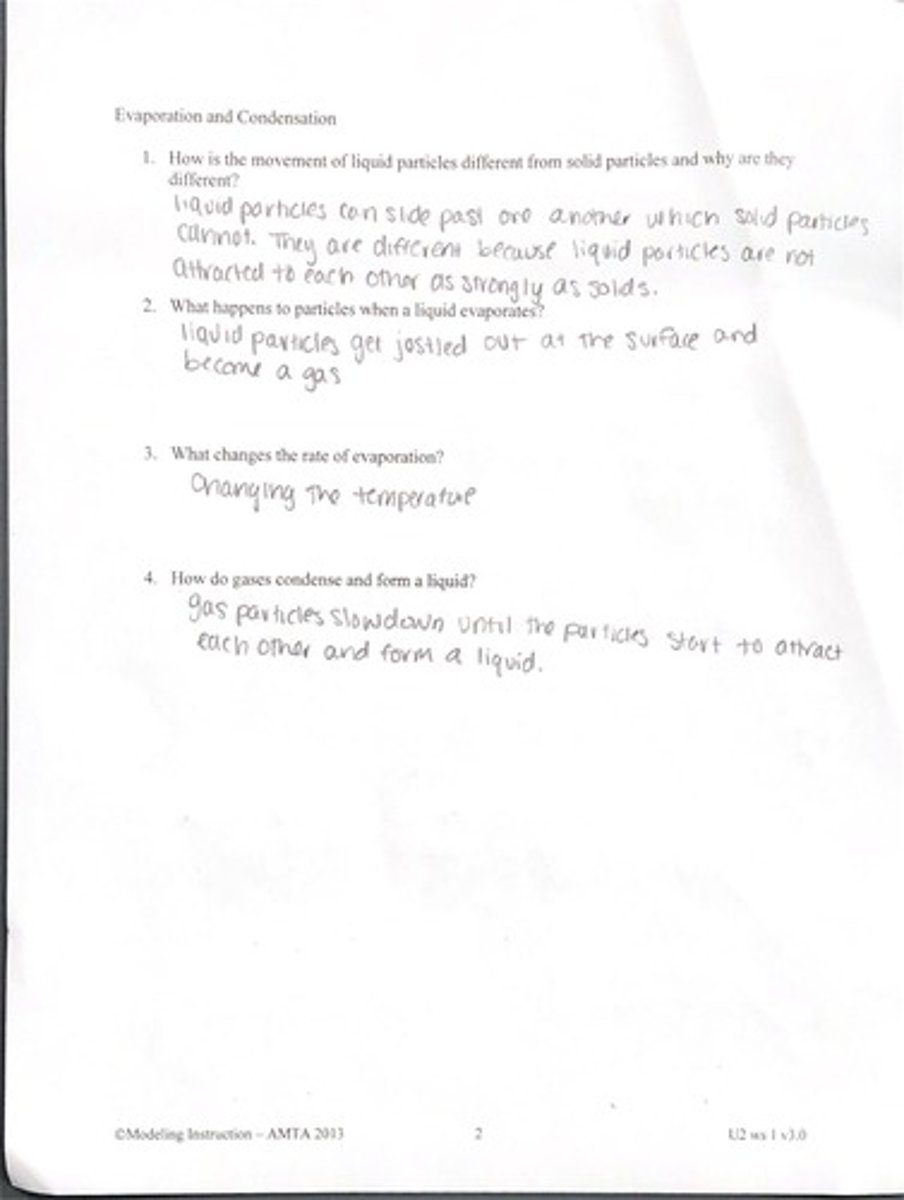States of Matter: Particle Motion, Melting, Evaporation, and Condensation
1/9
There's no tags or description
Looks like no tags are added yet.
Name | Mastery | Learn | Test | Matching | Spaced |
|---|
No study sessions yet.
10 Terms
States of matter that move about freely
liquid and gas
Are solids moving?
yes
Motion of particles in a solid
The particles move towards and away from each other
What keeps solid things from falling apart?
The attraction of the particles to one another
What happens to the particles when a solid melts?
The solid particles move faster until they have enough energy to overcome the attraction and the lattice work falls apart
Motion of particles in a liquid
Particles can slide past one another but there is still some attraction between particles
Difference in movement of liquid and solid particles
Liquid particles can slide past one another which solid particles cannot. They are different because liquid particles are not attracted to each other as strongly as solids.
What happens to particles when a liquid evaporates?
Liquid particles get jostled out at the surface and become a gas

What changes the rate of evaporation?
Changing the temperature
How do gases condense and form a liquid?
Gas particles slow down until the particles start to attract each other and form a liquid.